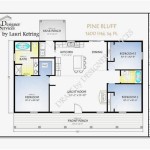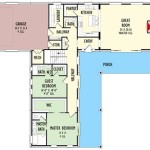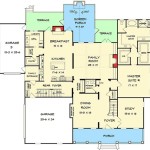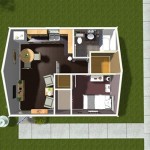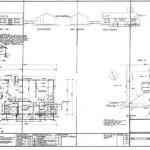How to Design a Basement Floor Plan
Basements are often seen as wasted space, but they can actually be a valuable part of your home. With a little planning and effort, you can turn your basement into a functional and inviting space that the whole family can enjoy. The first step in designing a basement floor plan is to decide what you want to use the space for. Once you know the purpose of the basement, you can start to lay out the floor plan.
Here are a few things to consider when designing a basement floor plan:
- The size of the space. How much space do you have to work with? This will determine the size and layout of the rooms.
- The purpose of the space. What do you want to use the basement for? Will it be a family room, a home office, a guest room, or a storage space?
- The traffic flow. How will people move through the basement? Make sure the layout is easy to navigate and that there is enough space for people to move around comfortably.
- The lighting. Basements can be dark, so it is important to plan for adequate lighting. Use a combination of natural and artificial light to create a bright and inviting space.
- The ventilation. Basements can also be humid, so it is important to ensure there is adequate ventilation. Install a ventilation system or open windows to allow fresh air to circulate.
Once you have considered all of these factors, you can start to draw up a floor plan. Start by sketching out the basic layout of the rooms. Then, add in the furniture, appliances, and other features. Be sure to leave enough space between the furniture and walls so that people can move around easily.
Once you are happy with the floor plan, you can start to finish the basement. Add walls, floors, and ceilings. Install the necessary plumbing, electrical, and HVAC systems. And finally, decorate the space to your liking.
With a little planning and effort, you can turn your basement into a valuable and enjoyable space for the whole family.
Additional Tips for Designing a Basement Floor Plan
- Use a graph paper to draw up your floor plan. This will help you to scale the space and to plan the layout of the rooms.
- Cut out pieces of paper to represent the furniture and appliances. This will help you to visualize the space and to see how the furniture will fit.
- Don't be afraid to experiment with different layouts. There is no one right way to design a basement floor plan.
- Get feedback from family and friends. They may have some good ideas that you haven't thought of.
- Once you are happy with the floor plan, have it reviewed by a professional contractor. They can help you to ensure that the plan is feasible and that it meets all of the building codes.
By following these tips, you can design a basement floor plan that is both functional and stylish. With a little planning and effort, you can turn your basement into a valuable and enjoyable space for the whole family.

How To Plan For A Finished Basement Chiefblog

Basement Floor Plans Types Examples Considerations Cedreo

Basement Floor Plans How To Make A Good Plan For House Layout

Basement Floor Plan

Basement Floor Plans Types Examples Considerations Cedreo

Basement Floor Plans

The Basement Floor Plan Making It Lovely

How To Create A Great Living Space For Finished Basement Layout

Basement Finishing Plans Layout Design Ideas Diy

Basement House Plans Next Level Homes


